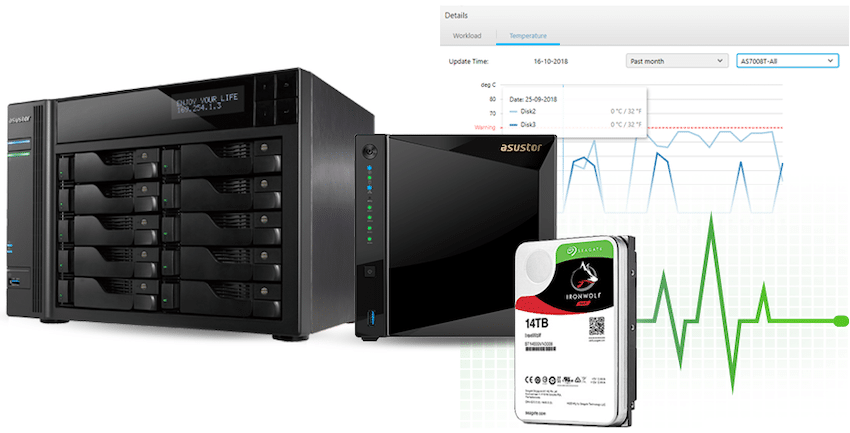![]() Seagate has been making NAS-specific hard drives for over five years, rebranding as IronWolf in 2016 to reinforce messaging around the drives being “tough, ready, and scalable.” It's not enough though to architect a drive for a specific application like NAS though, Seagate wants to differentiate themselves in the market by offering more. In this case that means IronWolf Health Management (IHM). NAS vendors can integrate with Seagate's IHM gain more visibility into drive health and usage indicators like temperature, shock, vibration, intermittent connections, and signal integrity. From here, the NAS vendor or the user themselves can take action to ensure their data is always safe and secure.
Seagate has been making NAS-specific hard drives for over five years, rebranding as IronWolf in 2016 to reinforce messaging around the drives being “tough, ready, and scalable.” It's not enough though to architect a drive for a specific application like NAS though, Seagate wants to differentiate themselves in the market by offering more. In this case that means IronWolf Health Management (IHM). NAS vendors can integrate with Seagate's IHM gain more visibility into drive health and usage indicators like temperature, shock, vibration, intermittent connections, and signal integrity. From here, the NAS vendor or the user themselves can take action to ensure their data is always safe and secure.
Seagate has been making NAS-specific hard drives for over five years, rebranding as IronWolf in 2016 to reinforce messaging around the drives being “tough, ready, and scalable.” It's not enough though to architect a drive for a specific application like NAS though, Seagate wants to differentiate themselves in the market by offering more. In this case that means IronWolf Health Management (IHM). NAS vendors can integrate with Seagate's IHM gain more visibility into drive health and usage indicators like temperature, shock, vibration, intermittent connections, and signal integrity. From here, the NAS vendor or the user themselves can take action to ensure their data is always safe and secure.

At the end of 2018, ASUSTOR announced support for IHM in their management software ADM 3.2.2 release. ASUSTOR visualizes the IHM data by implementing charts that provide users with a clear view of hard drive health, workload and temperature analysis. ASUSTOR also regularly scans the drives to maintain optimal performance and security in an ASUSTOR NAS.
In this brief we take a deeper dive into IHM and the ASUSTOR integration with Seagate to illustrate the benefits of IHM and how the strong partnership between Seagate and ASUSTOR leads to better outcomes for end users.
Seagate IronWolf Health Management Brief (PDF)

